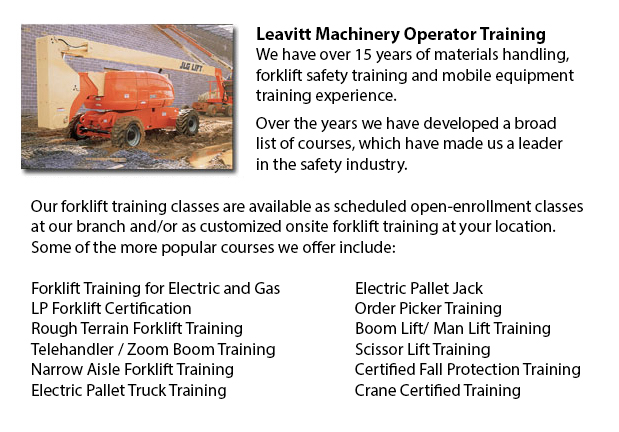
Coquitlam Aerial Boom Lift Ticket - Aerial lifts can accommodate various odd jobs involving high and tricky reaching spaces. Usually used to complete routine upkeep in buildings with elevated ceilings, trim tree branches, hoist burdensome shelving units or patch up telephone cables. A ladder might also be utilized for some of the aforementioned projects, although aerial platform lifts offer more security and strength when correctly used.
There are several designs of aerial platform lifts accessible on the market depending on what the task required involves. Painters often use scissor aerial hoists for instance, which are categorized as mobile scaffolding, of use in painting trim and reaching the 2nd story and above on buildings. The scissor aerial hoists use criss-cross braces to stretch out and extend upwards. There is a platform attached to the top of the braces that rises simultaneously as the criss-cross braces lift.
Bucket trucks and cherry pickers are a different variety of aerial hoist. They contain a bucket platform on top of a long arm. As this arm unfolds, the attached platform rises. Forklifts utilize a pronged arm that rises upwards as the handle is moved. Boom lifts have a hydraulic arm that extends outward and raises the platform. Every one of these aerial platform lifts call for special training to operate.
Through the Occupational Safety & Health Association, also labeled OSHA, training courses are offered to help make sure the workforce meet occupational principles for safety, system operation, inspection and maintenance and machine weight capacities. Employees receive certification upon completion of the classes and only OSHA licensed personnel should run aerial lift trucks. The Occupational Safety & Health Organization has developed rules to maintain safety and prevent injury while utilizing aerial platform lifts. Common sense rules such as not utilizing this machine to give rides and ensuring all tires on aerial hoists are braced so as to hinder machine tipping are noted within the rules.
Unfortunately, statistics expose that in excess of 20 aerial hoist operators pass away each year when operating and just about ten percent of those are commercial painters. The bulk of these mishaps were brought on by improper tie bracing, for that reason some of these may well have been prevented. Operators should ensure that all wheels are locked and braces as a critical security precaution to prevent the instrument from toppling over.
Additional suggestions involve marking the surrounding area of the machine in an observable manner to safeguard passers-by and to guarantee they do not come too close to the operating machine. It is crucial to ensure that there are also 10 feet of clearance between any utility cables and the aerial hoist. Operators of this apparatus are also highly recommended to always wear the proper security harness while up in the air.
-
Coquitlam Crane Certification
Coquitlam Crane Certification - The Crane Certification training program consists of subject matter recommended by industry concerning the safe and efficient operation of cranes. Trainees will be taught the following: how to identify cranes and their... More -
Coquitlam Crane Training Courses
Coquitlam Crane Training Courses - A crane is a kind of equipment designed to move, lift and lower heavy stuff. A crane is usually equipped with a hoist, sheaves, and chains or wire ropes. Cranes are used in the manufacturing, construction and transp... More -
Coquitlam Boom Lift Safety Training
Coquitlam Boom Lift Safey Training - Boom lifts are a kind of elevated work platform or aerial lifting device which are usually used in industry, warehousing and construction. Boom lifts can be utilized in virtually any setting due to their versatili... More -
Coquitlam Boom Lift Training
Coquitlam Boom Lift Training - Aerial platforms or also known as elevated work platforms are devices which allow workers to carry out duties and tasks at elevated heights that would not be otherwise reachable. There are different aerial lifts availab... More -
Coquitlam Forklift Certification Schools
Coquitlam Forklift Certification Schools - Forklift Certification is mandatory within North America. Hence, forklift training programs are important both for businesses and for people looking for jobs in industries as operators of forklifts. Forklift... More -
Coquitlam Wheel Loader Training
Coquitlam Wheel Loader Training - Normally, the different types of heavy equipment training are divided into 2 categories of equipment: those that have rubber tires and tracked vehicles. Tracked vehicles include items like for instance bulldozers, ex... More -
Coquitlam Heavy Equipment Training Schools
Coquitlam Heavy Equipment Training Schools - There are a lot of heavy equipment training schools to choose from. If you would like to get to the best, it is important to examine several factors of the school to be able to determine the level of educa... More -
Coquitlam Telehandler Training Courses
Coquitlam Telehandler Training Courses - Employers are responsible for making sure that their supervisory and operating personnel are trained to work proficiently making use of telehandler equipment. The skill level of workers should be assessed. If... More

Forklift Certification Coquitlam
TOLL FREE: 1-888-254-6157
Coquitlam, British Columbia
forkliftcertificationcoquitlam.com
Email Us
About Us


